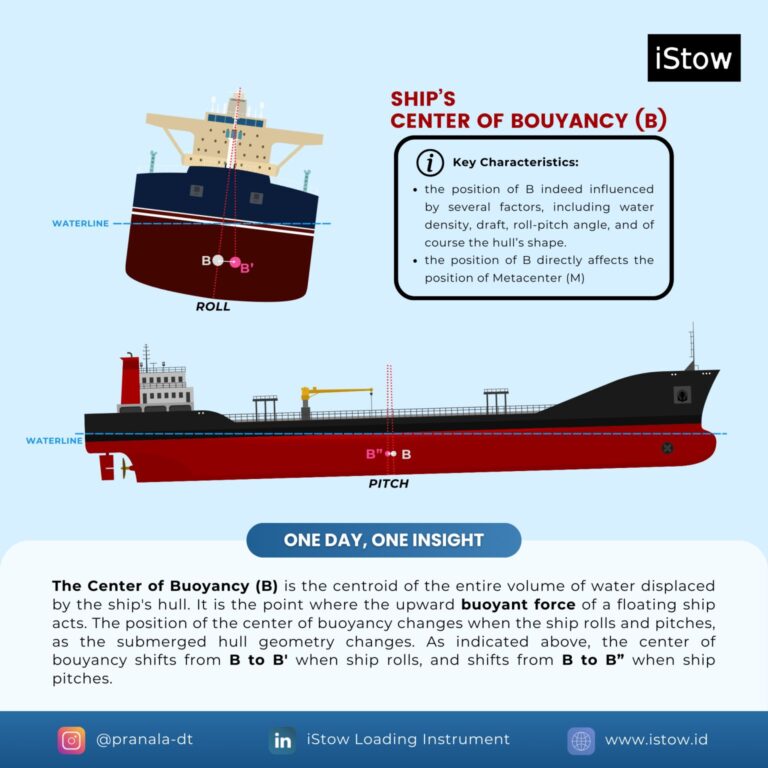Talk about Ships Stability: The Role of Center of Buoyancy
In this context, the Center of Buoyancy (B) plays a crucial role. Along with the other four stability reference points, this point is a key component
By Pranala Digital Transmaritim
19 February 2025
A ship’s stability at sea is a crucial factor in determining safe navigation. A ship must be able to remain upright or return to an upright position after encountering disturbances such as waves or wind. In this context, the Center of Buoyancy (B) plays a crucial role. Along with the other four stability reference points, this point is a key component in ensuring the ship remains stable at sea.

Infographics about Center of Buoyancy (2025). Photo: Pranala Digital Transmaritim
What is the Center of Buoyancy (B)?
Together with others 4 stability reference point, the center of buoyancy (B) plays a vital role in a ship’s stability at sea. It is the point through which the upward buoyant force acts, corresponding to the centroid of the submerged volume of the hull. The interaction between the center of buoyancy (B) and the center of gravity (G) determines the vessel’s ability to remain upright or return to an upright position after being tilted.
Center of Buoyancy (B) is the centroid of the entire volume of water displaced by the ship’s hull. It is the point where the upward buoyant force of a floating ship act. The position of the center of buoyancy changes when the ship rolls and pitches, as the submerged hull geometry changes. As indicated above, the center of buoyancy shifts from B to B’ when ship rolls and shifts from B to B” when ship pitches.
Key Characteristics:
- -The position of B indeed influenced by several factors, including water density, draft, roll-pitch angle, and of course the hull’s shape.
- -The position of B directly affects the position of Metacenter (M).
